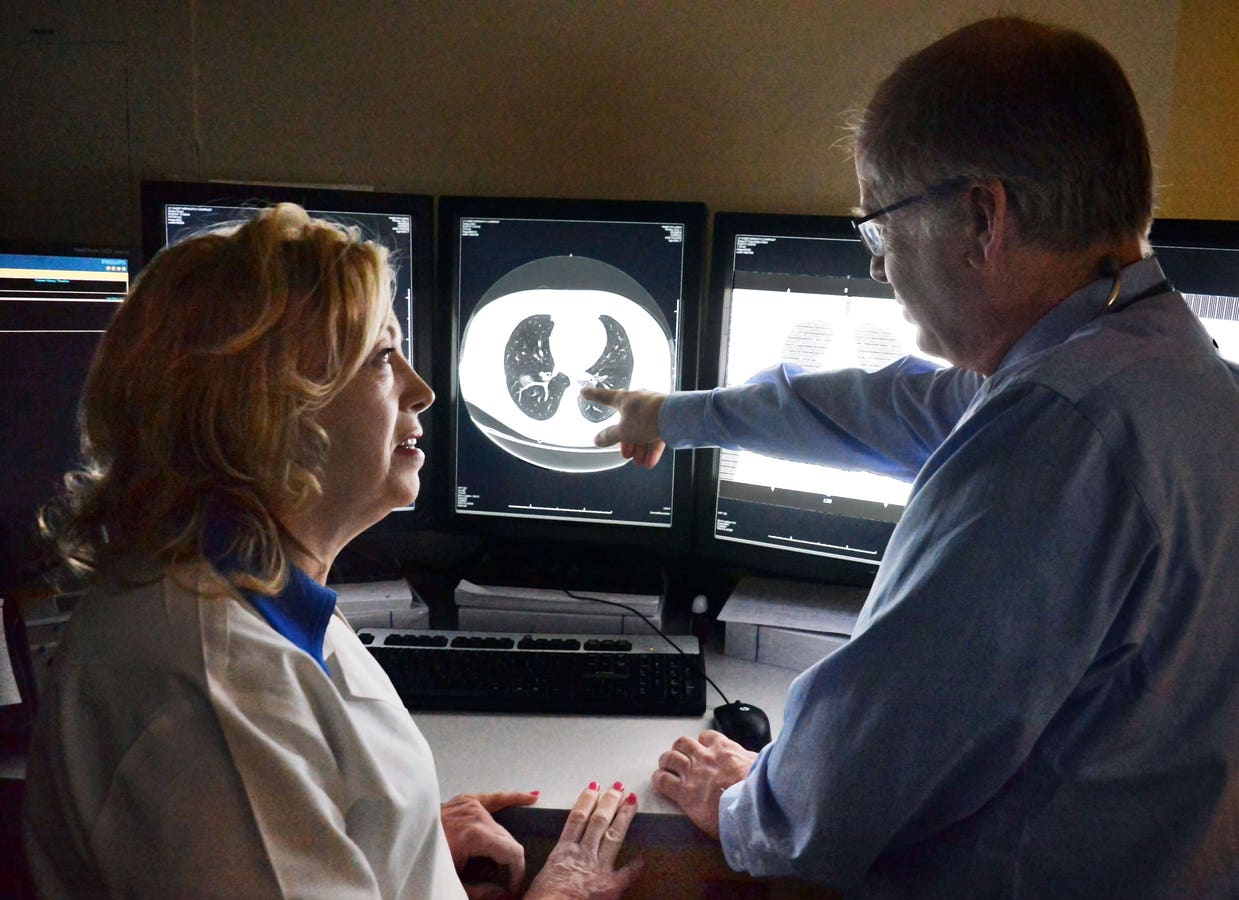Division of Pulmonology and Critical Care nurse practitioner Jeanne Millett, left, and pulmonologist Dr. Thomas Smith review lung cancer screening scans at Albany Medical Center Friday Feb. 5, 2016 in Albany, NY. (Photo by John Carl D’Annibale…
Why Lung Cancer Screening Remains Underused, And How The USPSTF Meeting Cancellation Could Make It Worse
